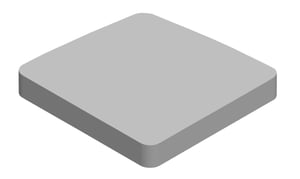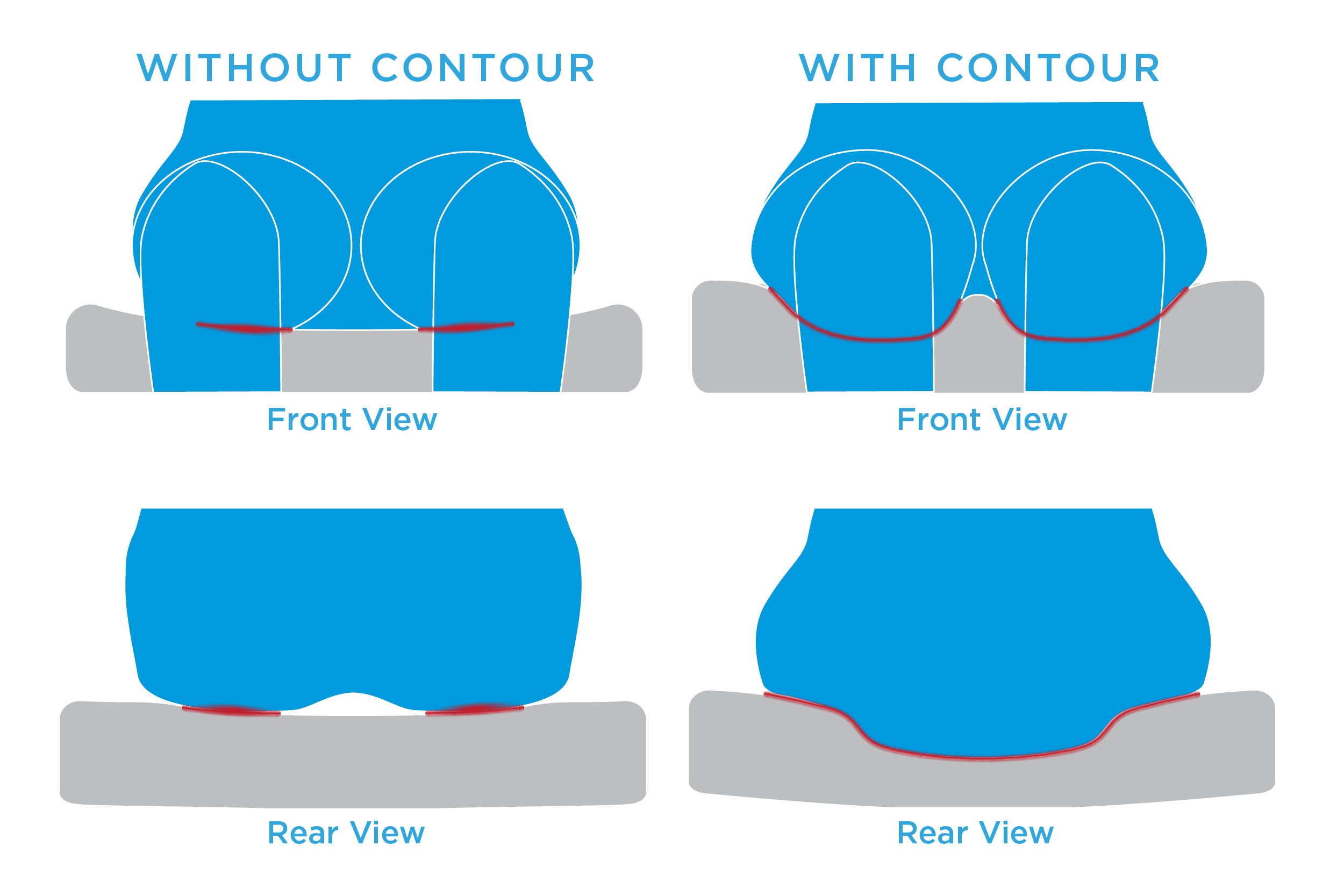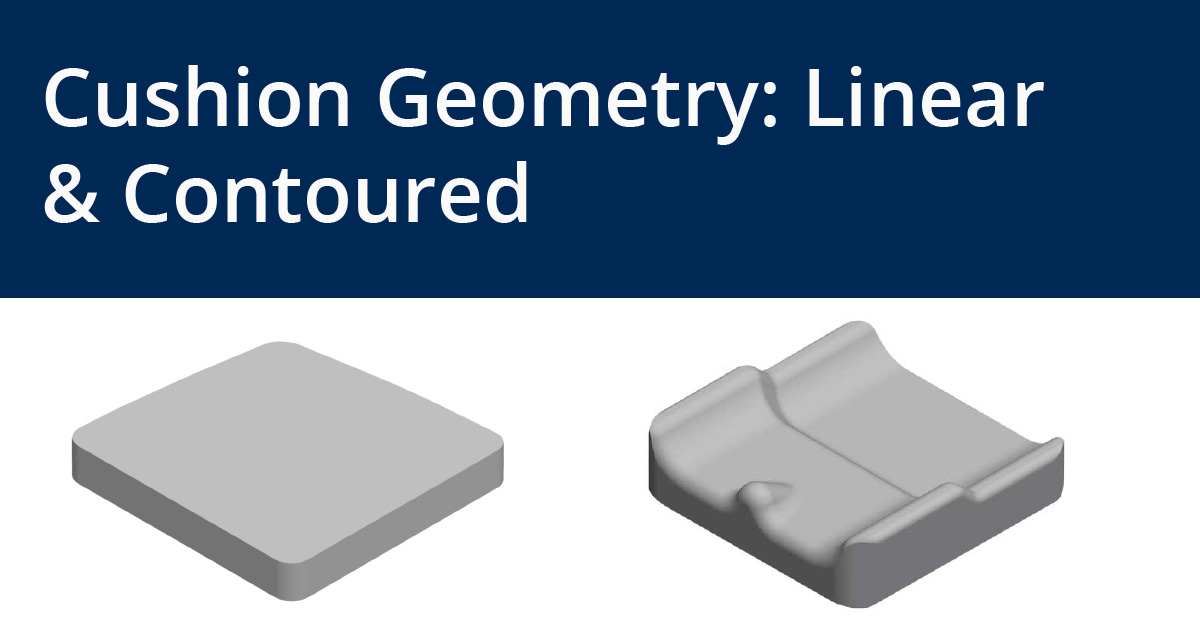Looking for more information on seating and positioning? Check out our digital, rehab-focused Wheelchair Seating & Positioning Guide here.
There are three areas to understand when choosing a wheelchair seat cushion: methods of pressure redistribution, cushion geometry, and cushion medium. Today's blog focuses on cushion geometry.
Linear
- Refers to a flat seat cushion
- Can be a variety of mediums (foam layers, foam with gel, air, etc)
Contoured

Contoured cushions are made of up various geometric components:
- Adductors: Tapered or Straight
- Medial Abductor
- Posterior Pelvic Well
- Anti-Thrust
- Wedge (not pictured)
How Contours Affect Pressure Redistribution
Contours increase surface area contact with the patient minimizing peak pressures.

Benefits and Considerations of Cushion Geometry
Linear
| Benefits | Considerations |
|
Allows freedom of movement |
With linear style cushions, if using traditional gel, it often disperses over time, exposing the bony prominences to peak pressures |
|
Can typically fit any body type |
Always consider the medium of a linear cushion. ie. Low quality foam compresses and loses its shape over time resulting in increased peak pressures |
|
Clients with significant lower extremity contractures may fit a linear style cushion better than a contoured one |
Lack of stabilizing contours and the medium may affect client fatigue over time |
Contoured
| Benefits | Considerations |
|
Promotes pressure redistribution to greater surface areas, reducing peak pressures |
Various body shapes & sizes may not always fit in the contours |
|
Increased stability can secure the pelvis in an optimal position and reduce excessive fatigue |
May not fit clients with significant lower extremity contractures |
|
Use of contours can accommodate or correct abnormal postures |
May restrict freedom of movement during ADLs |
|
|
Aggressive contours may make independent transfers more difficult |

 Stacey Mullis, OTR/ATP
Stacey Mullis, OTR/ATP
Director of Clinical Marketing
Stacey serves as Director of Clinical Marketing for Permobil. A practicing OTR for over 20 years, she has experience in school-based pediatrics, inpatient rehabilitation, long term care, and home health. With her interest in wheelchair seating and positioning, Stacey engaged the challenges of providing appropriate seating in various clinical settings. She now uses this experience to develop programs and resources to educate clinicians on the principles of seating and wheeled mobility. She is passionate about equipping clinicians and through her previous role as Director of Clinical Education with Comfort Company and now with Permobil she has taught nationally and internationally to increase therapist capacity in this specialty area. Mullis graduated from Western University in London, Ontario, Canada with a BA Linguistics and BSc Occupational Therapy. She is a member of the NCOTA, CTF Executive Board, NRRTs, RESNA, and AOTA.

